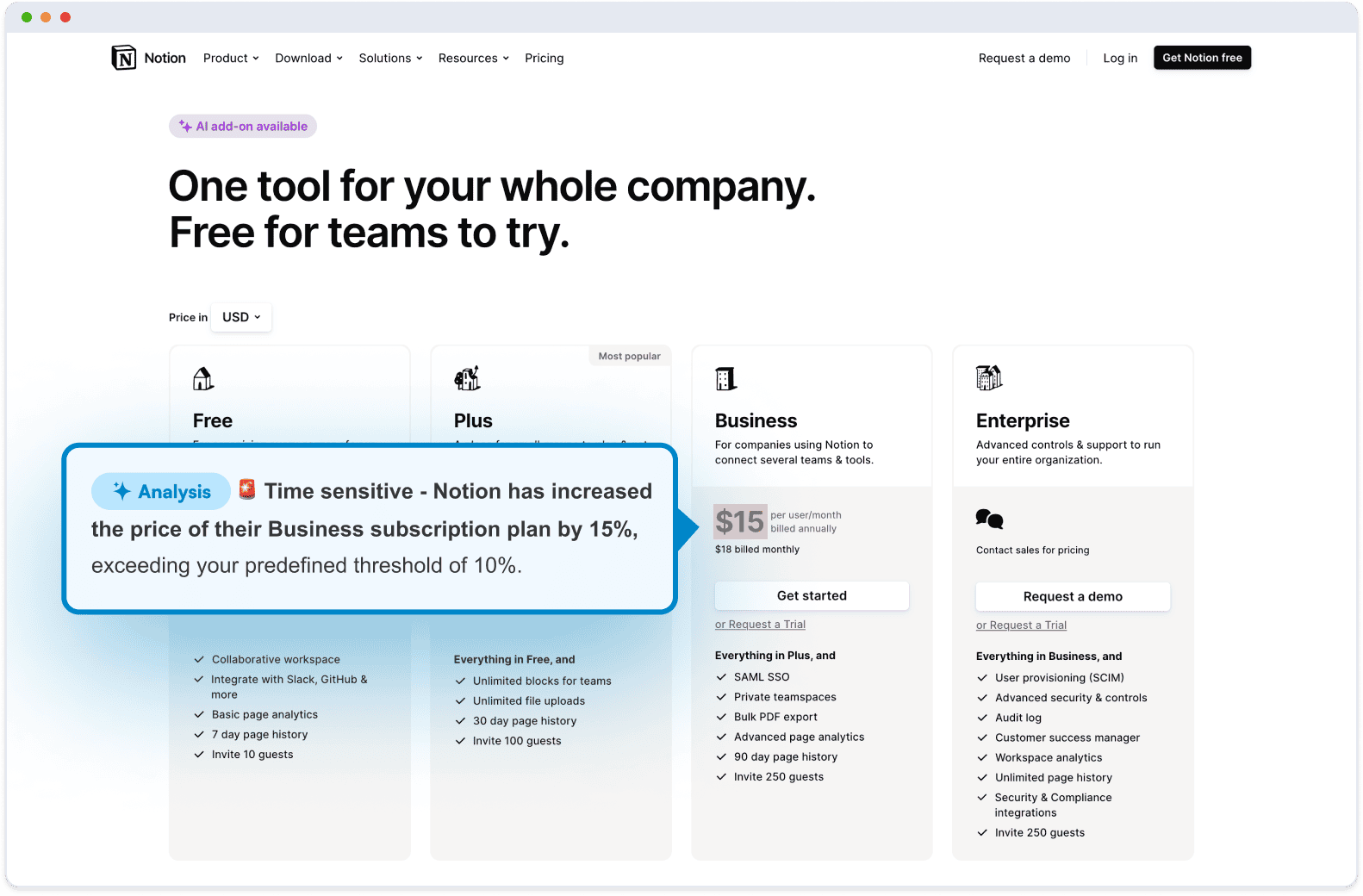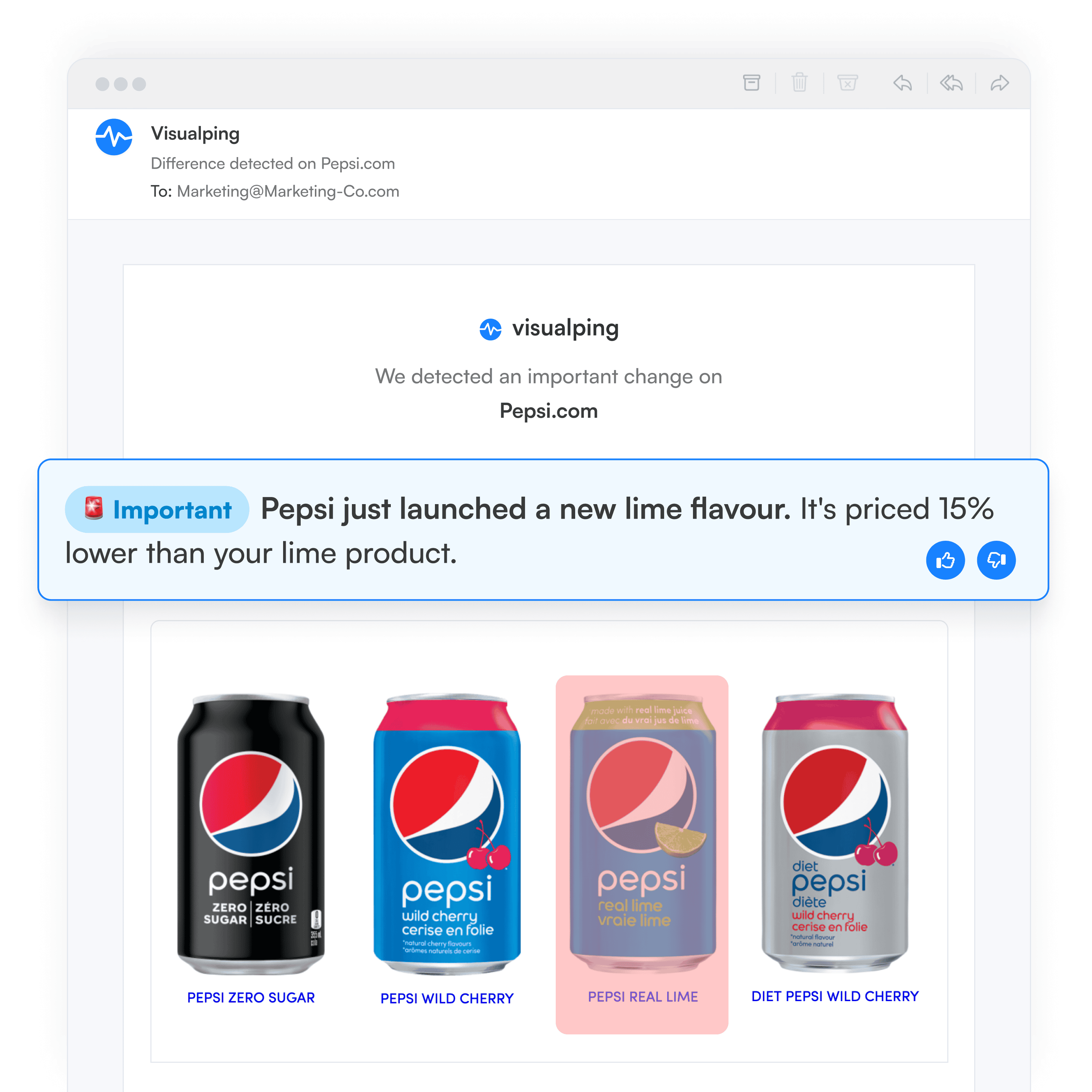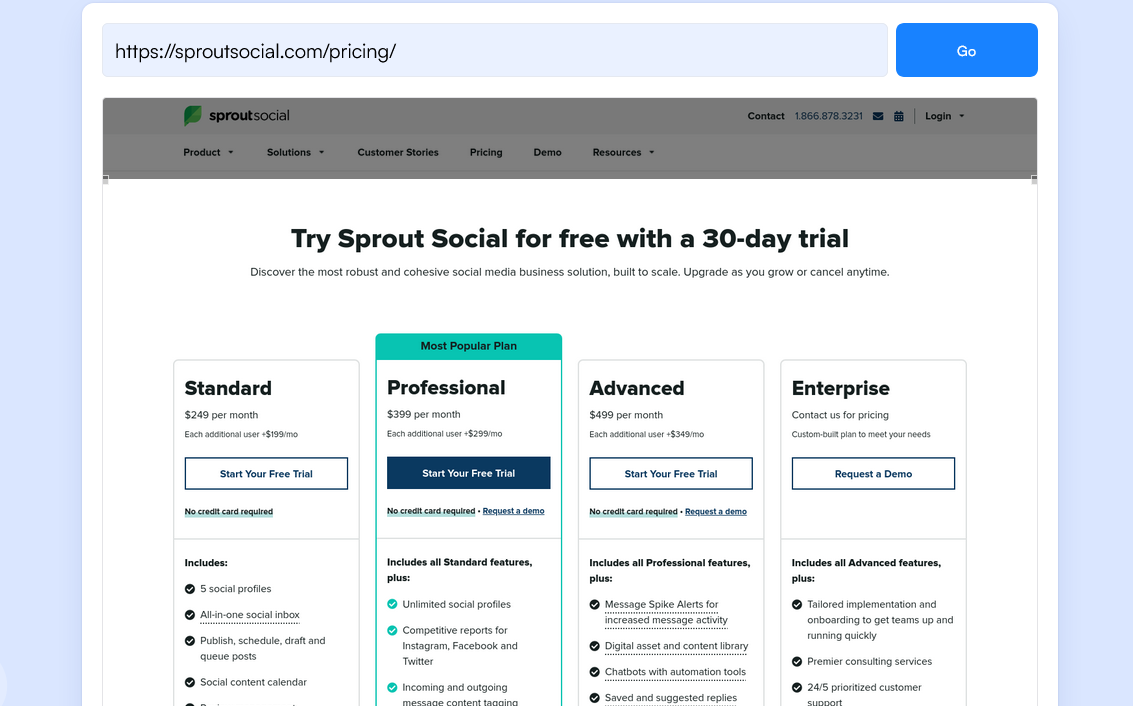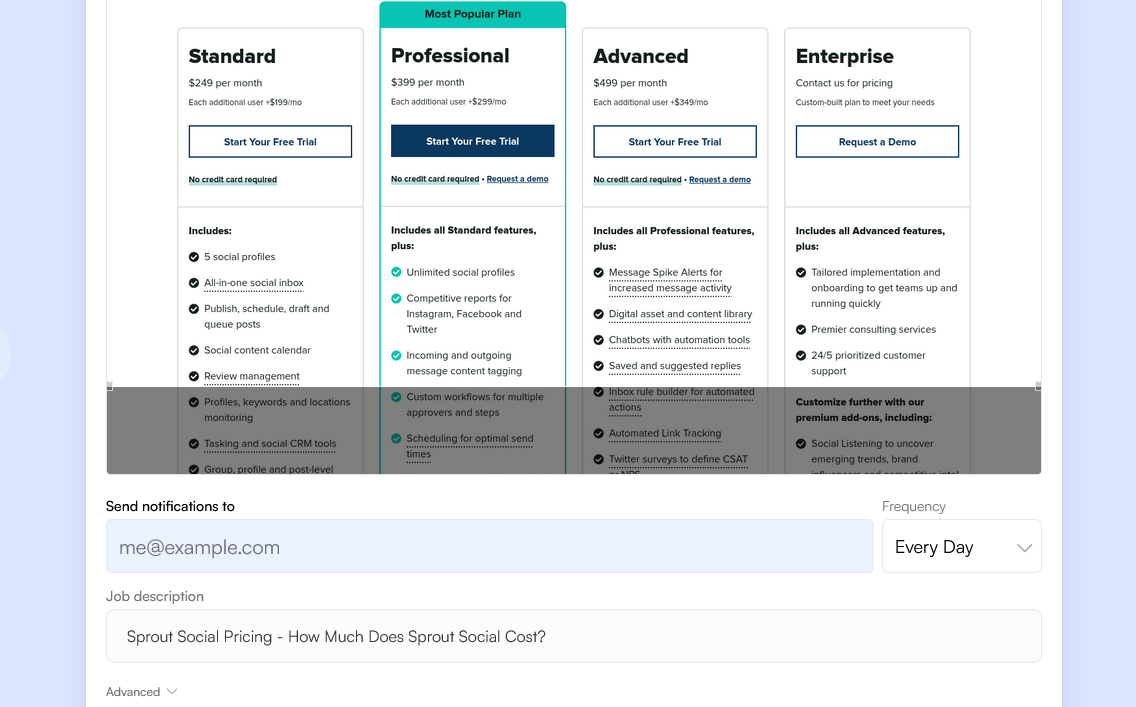How to Create a Competitor-Based Pricing Strategy - Visualping
By Emily Fenton
Updated January 7, 2025

Competitor Price Comparison: How to Create Your Pricing Strategy
Setting the best price for your products and services takes time, and researching all of your competitors’ pricing isn’t necessarily a straightforward process.
Unfortunately, the wrong prices, whether they’re too high or too low, can have a negative impact on your sales. Businesses need a comprehensive tool they can use to track changes in competitor listings and make sure their own prices are competitive.
Enter Visualping, one of the top website monitoring tools available, and powered by AI. Visualping can monitor any web page for changes, and sends you an alert when there's an update. The alert includes an AI-generated summary, distilling the change in two to three lines, and a screenshot, so you can understand the price change quickly.

It's designed to help organizations get straight to designing and implementing effective pricing strategies, without the manual research process, and risk of missing important pricing data.
Visualping’s flexibility makes it perfect for those conducting competitor price comparisons, and using it as a part of your pricing intelligence strategy means there’s no limit to what you’ll be able to accomplish.
What Is Competitor-Based Pricing?
“Competitor-based pricing” refers to a pricing strategy that carefully considers how much a company’s rivals are selling their products and services for. These insights into competitor branding and market approach allow you to set your own prices accordingly.
Competitive-based pricing is, just one of several common pricing strategies. Some other strategies include:
- Premium pricing
- Price matching
- Loss leader pricing
Every strategy has its own strengths and weaknesses, but they can be paired together to take advantage of each. It is this flexibility that makes competitive pricing intelligence software one of the best means of approaching marketing in today’s fast-paced business environment.
How to Conduct a Competitive Pricing Analysis
Developing a competitor-based pricing strategy can be complicated, so it’s important to have a framework for assessing the different components of competitor pricing in place. By following these quick steps, you'll have an idea of who the players are in your market, how they price, and where you should position your own brand via pricing.
1. Identify Your Competitors
Your first step is to find out who your competitors are. The identification process doesn’t have to be complicated, and you can simply start with some informal research.
Using either direct or indirect methodologies should be enough to find out who you should be most concerned about. You can either go straight to their website or do a Google search and see where things go from there.
2. Classify Your Competitors into Categories
Competitors can take on a variety of different forms.
While direct competitors generally offer the same products and services that you do, indirect competitors have some overlapping offerings that fit the same niche.
You should also note that some companies may not be competing with you at all for your customers but instead vying for success in other spaces, such as SEO.
3. Take a Look at Your Competitors’ Content
Take some time to look at the content that your competitors are putting out. Consider their branding strategy, how the brand positions itself, and how this impacts their pricing strategy. Whether it’s through advertisements, their website, blogs, social media, or some other method, you should have a good understanding of how their strategy plays out.
4. Analyze Competitors’ Pricing
Of course, you need to do is look at your competitors' prices and fluctuations in competitor pricing over time. While you can manually track changes, you also have the option of using a dedicated price intelligence tool to manage everything in a single place.
Ask yourself the following questions when analyzing your competitor’s pricing:
- Are your competitor’s prices the same?
- Is there more than one pricing tier being offered?
- Are there any ongoing sales or discounts?
- Do base prices regularly change?
- What is your competitor’s pricing strategy?
With enough data, you’ll be able to make better decisions about your own prices, allowing you to reach out to new customers and increase your growth.
How to Use Visualping to Keep Tabs on Competing Brands’ Pricing

Your pricing strategy should be informed by real-world data so you can keep up with ongoing changes in the market. With a service like Visualping, you won’t have to do website competitive analysis alone. Visualping makes it easier than ever to monitor multiple web pages for product listings and be notified as soon as changes occur.
Anyone can get started with Visualping through just a few simple steps:
Step 1: Copy the URL of Your Competitor’s Pricing Page from Their Website, Then Paste It into the Search Field on Visualping’s Homepage
To set up Visualping to track a competitor's item or service, you simply need to go to its page on your competitor’s website and copy its URL. Next, go to Visualping’s homepage and paste it into the search field. You should now see the product loaded into the tool.
Step 2: Select the Part of the Page You Want to Monitor for Changes
Visualping allows you to precisely select which part of a page you want it to scan for changes, which helps limit the number of unwanted notifications you’d otherwise receive regarding unimportant changes. With competitor pricing being your target, you’ll want to select the area where the product’s price is listed so Visualping can let you know if and when it’s updated.

Step 3: Decide How Often You Want Visualping to Notify You of New Changes to the Page
Now, you’ll need to let Visualping know how often to check back for updates. There is no cost to have the tool check back on a single page once a day, but you can also choose to subscribe to Visualping’s higher tiers to have it check back as often as every five minutes or as long as once a month.
Step 4: Enter the Email Address Where You Want to Receive Competitor Price Alerts
Now that you’ve told Visualping how often to check back, you need to provide an email, so it knows where to send any notifications. Once you’ve created your account, you’ll be able to select from other communication channels if you like.

Step 5: Check Your Email to Finish the Signup Process and Start Tracking Your Competitors!
For the final step, open the verification message sent to the email account you provided. It will contain a link that takes you back to your Visualping account to complete the verification and setup process. Now you’re all set to track your competitors for price comparisons.
Improve Your Competitor Pricing with Visualping
Competitive monitoring is essential for businesses that want to stay ahead of their peers, but given that there are so many factors to keep track of, it’s easy to fall behind. Instead of allowing others to leave you in the dust, consider partnering with a reliable service capable of analyzing your competitors' prices in real-time.
Visualping is leading the way in website change detection, monitoring, and alerts by simplifying the process from start to finish.
Visualping: competitor monitoring made simple
Get targeted updates from the competition on autopilot. Trusted by 85% of Fortune 500 companies.
Emily Fenton
Emily is the Product Marketing Manager at Visualping. She has a degree in English Literature and a Masters in Management. When she’s not researching and writing about all things Visualping, she loves exploring new restaurants, playing guitar and petting her cats.